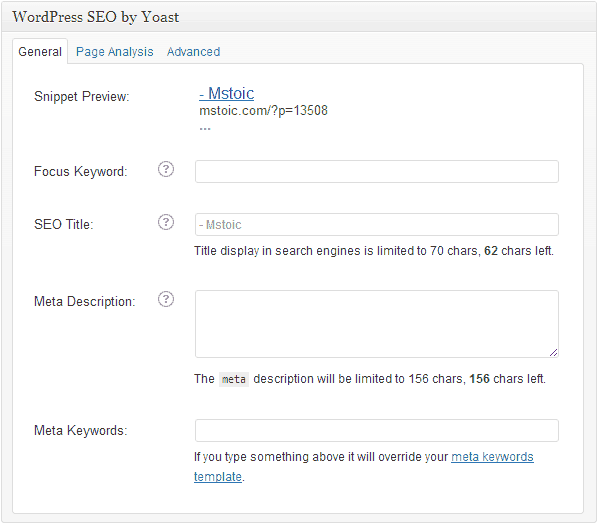Search Engine ranking of an article depends upon the content of the article, and the search queries depend on the demand. If the content of your article is good and people are searching about it, you still may not get the rankings your article is worth of. If your article is not linkable from your other content, then some on-page search engine optimization can give a lot of benefits and exposure.
If there is no demand for a particular content/article, then more people will not search for it and it will become useless as far as search engines are concerned.
The visitor comes to a page reading the article’s title and it should be specific, to attract the visitor. It should also be linkable, that is, the visitor should be able to reach the article with ease.
First of all, the content itself should be unique and should cover all the information related to the topic in-depth. The visitor should be able to find answers to all the queries for which he/she landed to your website. Your content should have the keywords that you want your visitors to come to your page for, and the visitors must get the information they wanted to achieve.
There are several on-page Search Engine Optimization factors that we should keep in mind, for achieving higher rankings and for getting most traffic to our blog post.
1. Title of the Content
The title of our content should have the target keyword and that too in the beginning and there should be no repetition of the same keyword in the title tag itself.
2. Headings
We must make use of headings tag like H1, H2 and H3 for highlighting various headings and points, to make the content more appealing, and to make the visitor goaded to read the content further.In our content, we should use bold letters for the words we want to highlight, and also italicize and underline the keywords that are important.
Related Articles
3. Image in the Article
Many a time, a visitor is attracted just by a particular image and if we can add our keyword to the image title, we can bring descent traffic from image search results too. Images also beautify the content and tend to keep visitor for a longer duration. Here we should keep in mind to look for such images, which are as small as possible, as images larger in size make page load speed slower.
4. Size of the Blog Post
You must develop the habit of writing in detail, explaining all the points. This will increase the size of your article and you can include more instances of your keywords without doing keyword stuffing. I see many blog posts that are quite short with just some lines of content. An ideal blog post needs to be a minimum of 300 words to get a better ranking. This is not a hard and fast rule and sometimes articles with less content can also outrank the longer articles.
5. Interlinking Your Blog Content
It is beneficial to link our blog content with other related blog posts on our blog, this increases traffic and pageviews and decreases the bounce rate, which is a good signal for high quality content to the search engines. This makes your readers spend more and more time on our blog.
6. Writing Interesting and Engaging Content
The content we write should be of interest to the visitors, and should fully engage the person. Many a time, questions are asked from the visitors, or their opinion is sought, whereby the visitor gets hooked and interested. If the blog post is not interesting, the visitor gets bored and leaves the blog.
7. Describing the Content
A prospective visitor should be told of the content in the description text. A keyword or keyword phrase may form a part of the description text, but do not repetitively use the keyword or keyword phrase. The description should be added to all the pages of your website. This is done by adding a Meta tag in the <head> of the document. Below is an example showing the usage of “description” Meta tag. The description need not be longer than 160 characters, this is the length which the search engine displays.
<meta name ="description" content="Here goes the short description of the article." />
8. Heading
Remember that your keyword phrase should form a part of your heading. This is necessary because this is what the searcher first reads about your article when your article appears on the SERP.
9. Linking content to an authority website
It is good to link your blog post to an authority website, which is related to your subject. If you have an article on medicine, then you can link to some Pharma companies, Hospital websites, etc.
10. Demand and Supply
We should not forget that the traffic to a particular blog post depends on the demand for the content in that particular post. If the demand is more, and the number of blog posts having that content is limited, there is bound to be heavy traffic to the blog. In case the supply and content is more, there would be less traffic to the blog post. After all, it is all demand and supply effect.
11. If Your Blog is on WordPress, Then Use SEO Plugins
There are many plugins for WordPress that allow you to add META tags that include the title, description, keywords and other META tags. Some of them even add the open graph tags which are required by Facebook to display the description, title and the image. Read our article on SEO for a WordPress blog to get a better understanding of what you need to do for optimizing your WordPress blog.

The Checklist for On-page SEO Optimization
An ideal blog post should:
- Be relate to specific topic or product or service.
- Include an attractive heading.
- Include sub-heading wherever needed.
- Include image of small size(s) with the keyword in the alt tag..
- Provide original content, after having deeply conducted research on the subject.
- Provide link to Authority Website.
- Provide link to other page(s) on our site, i.e., interlink your content as much as possible.
- Be of a reasonable size with atleast 300 words.
- Contain content that is interesting, educating and engaging
